The Gallery of the Academy (Galleria dell’Accademia in Italian) is one of the most visited museums in Florence and an essential stop to admire Michelangelo’s ultimate masterpiece: the David.
However, the museum also offers significant opportunities for additional reflection, catering to various interests, such as music, or art and painting techniques.
It is the second most visited museum in Florence, so it is worth purchasing tickets in advance. The museum is less crowded in the late afternoon.
Located not far from the Santa Maria del Fiore Cathedral, the Accademia was founded in the 18th century to house works intended for the education of students of the Academy of Fine Arts. Today, it displays a remarkable collection of Florentine art from the 13th to the 16th century, as well as historical musical instruments and Gothic and Renaissance artworks. The visit offers a rich itinerary that allows visitors to discover Michelangelo’s genius, as well as the evolution of Florentine painting over several centuries. The intimate and focused atmosphere of the museum makes it a different experience from the vast Uffizi galleries, more targeted and easily accessible for visitors.
Essential Works to See
- Michelangelo’s David (1501–1504), symbol of Florence and a Renaissance masterpiece.
- The Prisoners (or Unfinished Slaves) by Michelangelo, unfinished statues with unique expressive power.
- Saint Matthew by Michelangelo, created for Florence Cathedral.
- The Gothic painting collection, including altarpieces and crucifixes from the 14th and 15th centuries (including Giotto and Orcagna).
- The Medici musical instruments, including a Stradivarius violin and historic harpsichords.
- The Hall of the Colossus, featuring the plaster model of Giambologna’s Rape of the Sabine Women and other monumental sculptures.
- Botticelli paintings, such as the Adoration of the Magi, a testimony of Florentine Quattrocento art.
- Trecento frescoes and panels, including works by Pacino di Bonaguida and Lorenzo Monaco.
- The room of Ghirlandaio and his contemporaries, illustrating the transition to the High Renaissance.
Visit Itinerary
The visit begins in the Hall of the Colossi, where plaster models and large-scale works are displayed, providing an initial immersion into Florentine monumental art.
It continues into the famous David Gallery, a long corridor bathed in natural light highlighting Michelangelo’s Prisoners, unfinished statues that appear to emerge from the stone. At the end of the corridor stands the David, a universal masterpiece sculpted by Michelangelo between 1501 and 1504. The statue, over 5 meters tall, embodies the idealized power and beauty of the Renaissance man.
The itinerary then moves to the Florentine painting rooms, covering the 13th to 16th centuries. Here, visitors find gilded Gothic altarpieces, works by Giotto and his pupils, as well as Quattrocento painters such as Ghirlandaio and Botticelli.
The San Matteo Hall displays another unfinished Michelangelo sculpture, made for Florence Cathedral.
The museum also houses the Medici musical instrument collection: harpsichords, violins, cellos, including a 17th-century Stradivarius violin.
The visit concludes with galleries dedicated to religious art and minor arts, often lesser-known but valuable for understanding the evolution of Florentine painting styles. Overall, the Galleria dell’Accademia itinerary is shorter than that of the Uffizi but allows a focused immersion in Michelangelo and Florentine medieval and Renaissance art. A full visit generally lasts between one and a half to two hours, depending on time spent in each section.
FAQ – Galleria dell’Accademia
- How long does the visit take?
The visit lasts on average 1.5 to 2 hours. Art enthusiasts can easily spend more time, particularly in the Gothic painting rooms and the musical instrument collection. - Can photos be taken?
Yes, photos without flash are generally allowed, but monopods and tripods should be avoided. - What are the opening hours of the Accademia?
The museum is generally open from Tuesday to Sunday, 9:00 AM to 6:45 PM. Last entry at 6:15 PM. Closed on Mondays, January 1, May 1, and December 25. (Check updated hours on the official website before visiting.) - What is the most famous work in the museum?
Undoubtedly, Michelangelo’s David, sculpted between 1501 and 1504, is the centerpiece and a global icon of the Florentine Renaissance. - What other masterpieces can be admired?
Besides the David, one can see the Prisoners and Saint Matthew by Michelangelo, Gothic altarpieces by Giotto and Orcagna, and the precious Medici instrument collection. - Should tickets be booked in advance?
Yes, it is strongly recommended to book tickets online to avoid long queues, especially during the high tourist season.
Museum Rooms
The Hall of the Colossus
The gallery welcomes visitors into the Hall of the Colossus (Sala del Colosseo), named after the Dioscuri of Montecavallo displayed here until the early 20th century. Today, the hall houses the preparatory model of Giambologna’s Rape of the Sabine Women, an exemplary 16th-century sculpture. Around it, one can admire paintings by Perugino, Filippino Lippi, Pontormo, Domenico Ghirlandaio, and Bronzino, reflecting the richness of Florentine Renaissance and Mannerist painting.
To the right of the entrance, don’t miss the famous Cassone Adimari, a painted chest depicting a wedding procession in 15th-century Florence. To its left is the small painting of the Virgin of the Sea, attributed to Botticelli, a work of great delicacy.
The Prisoners Gallery and the Tribune
A highlight of the visit is the Prisoners Gallery, framed by Michelangelo’s famous unfinished statues: the “Slaves” or “Prisoners,” which appear to struggle within the marble. This corridor leads to the Tribune, where Michelangelo’s David stands, a Renaissance masterpiece under a dome designed to highlight it.
A few steps from the David, three paintings by Alessandro Allori are displayed, rich in floral symbolism, illustrating the late Renaissance. Nearby, in what was originally a hospital wing, is the Gipsoteca Bartolini, dedicated to plaster models created in the 19th century by Lorenzo Bartolini and his students. This space illustrates the Florentine academic teaching method and provides a rare insight into 19th-century art.
The Museum of Musical Instruments
For opera, theater, and classical music enthusiasts, this section is a true delight. The Grand Dukes of Medici and Lorraine Collection presents around fifty valuable instruments: harpsichords, viols, wind instruments, and percussion. It includes one of the first pianos, created by Bartolomeo Cristofori for the Medici in the early 18th century, as well as several exceptional violins, including works by Antonio Stradivari. The visit also allows listening to some instruments via recordings, adding a sound dimension to the discovery.
Florentine Painting of the 13th Century and Gothic Painting
To complete the ground-floor visit, one passes through rooms dedicated to Florentine Trecento painting (14th century) from numerous churches and monastic complexes in Florence. These works include major pieces by Giotto and his disciples, such as Bernardo Daddi and the Orcagna brothers. One can also admire masterpieces by Lorenzo Monaco and Pacino di Bonaguida, marking the transition from Gothic to Renaissance. These rooms offer a unique immersion into the spirituality and aesthetics of medieval Florence.
Renaissance and Mannerist Painting
Along the itinerary, several rooms feature works from the Florentine Renaissance and Mannerism. Notably, paintings by Botticelli, such as the Adoration of the Magi, as well as by Filippino Lippi, Ghirlandaio, Pontormo, and Bronzino. These artists reflect the evolution of Florentine painting between the 15th and 16th centuries, from exploring new pictorial spaces to Mannerist experimentation.
First Floor: Giovanni da Milano and the Late 14th Century
The first floor is primarily devoted to religious painting. It houses the collection of Giovanni da Milano and other late 14th-century painters, reflecting Northern Italian influences and the development of International Gothic. An educational video explains the techniques used to create these panels, including the use of poplar wood for durability and flexibility, supporting gold leaf and colored pigments. This section highlights the richness and diversity of late medieval Florentine painting.
Where the Galleria dell’Accademia is Located
If you see this after your page is loaded completely, leafletJS files are missing.
Information, Tickets, Guided Tours, and Links
Tickets and Guided Tours
Further Reading
- Official Website — Galleria dell’Accademia of Florence
- Wikipedia (French) — Galleria dell’Accademia of Florence
- Accademia.org — Museum History
In the Florence Museums Category
- Museums in Florence
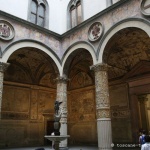 Florence, cradle of the Renaissance, is a true capital of art ...
Florence, cradle of the Renaissance, is a true capital of art ... - Uffizi Gallery
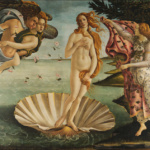 La Uffizi Gallery in Florence is one of the most famous ...
La Uffizi Gallery in Florence is one of the most famous ... - Palazzo Pitti, its museums and the gardens of Boboli
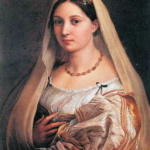 Palazzo Pitti is one of the largest buildings in Florence and ...
Palazzo Pitti is one of the largest buildings in Florence and ... - National Archaeological Museum of Florence
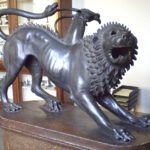 Located in the Palazzo della Crocetta, the National Archaeological Museum of ...
Located in the Palazzo della Crocetta, the National Archaeological Museum of ... - Bargello
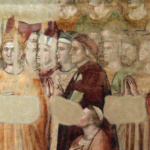 The Bargello Museum is located in the historic center of Florence, ...
The Bargello Museum is located in the historic center of Florence, ... - Museum of Palazzo Vecchio
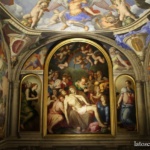 Palazzo Vecchio is a historic palace and museum. The interior rooms ...
Palazzo Vecchio is a historic palace and museum. The interior rooms ...


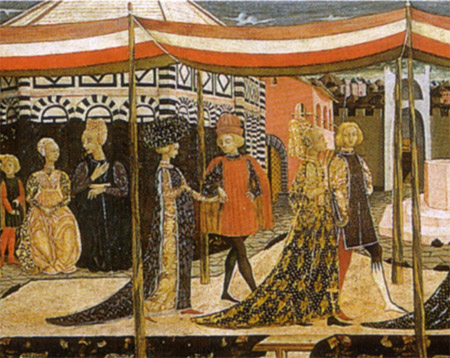
No Comments Yet